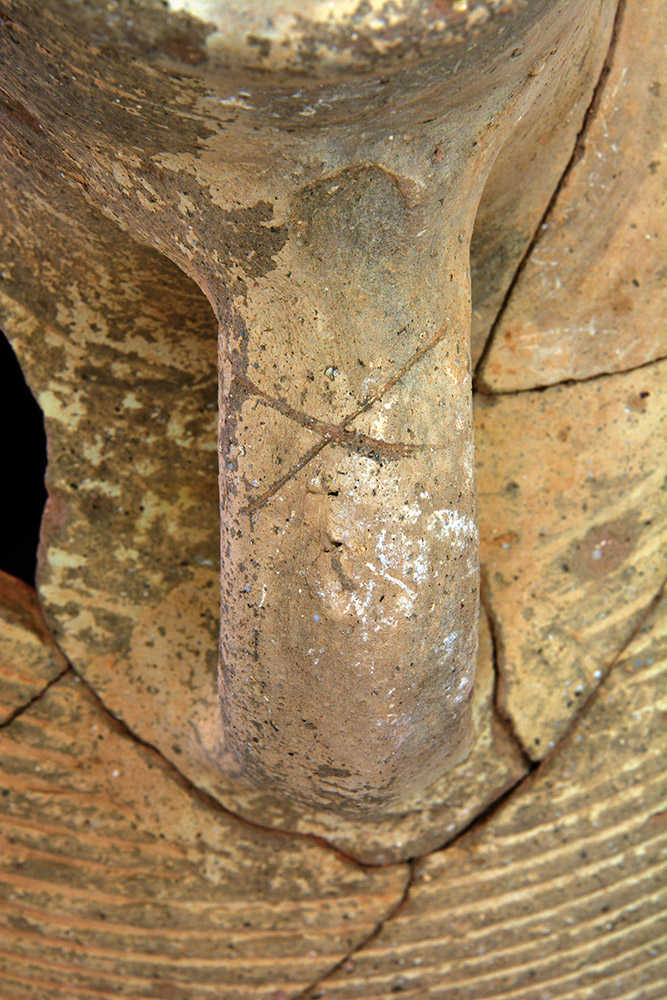AJA Open Access
January 2024 (128.1)
Article
A Possible Amphora Second at Sikyon, Greece
This article examines the role of quality control during the manufacturing process of Roman pottery. The criteria used by ancient potters to determine whether a finished vessel was suitable for sale and use or instead should be discarded as a waster has seen limited attention. Additional focus on this topic provides a means of studying behaviors associated with ancient pottery production and decision-making behind different steps of the process. Of particular interest for addressing the topic is a locally manufactured amphora recovered at the site of Sikyon, Greece, from a late fourth- to early fifth-century CE destruction deposit. This amphora was recovered from a use context but has several evident production defects and an X-shaped graffito incised on one of the handles, and it may have been designated as a second in antiquity. Along with a detailed analysis of the amphora, the discussion examines available archaeological, epigraphic, and paleographic evidence for quality control in Roman pottery production and attempts to shed additional light on potential ancient practices of designating vessels as seconds.
